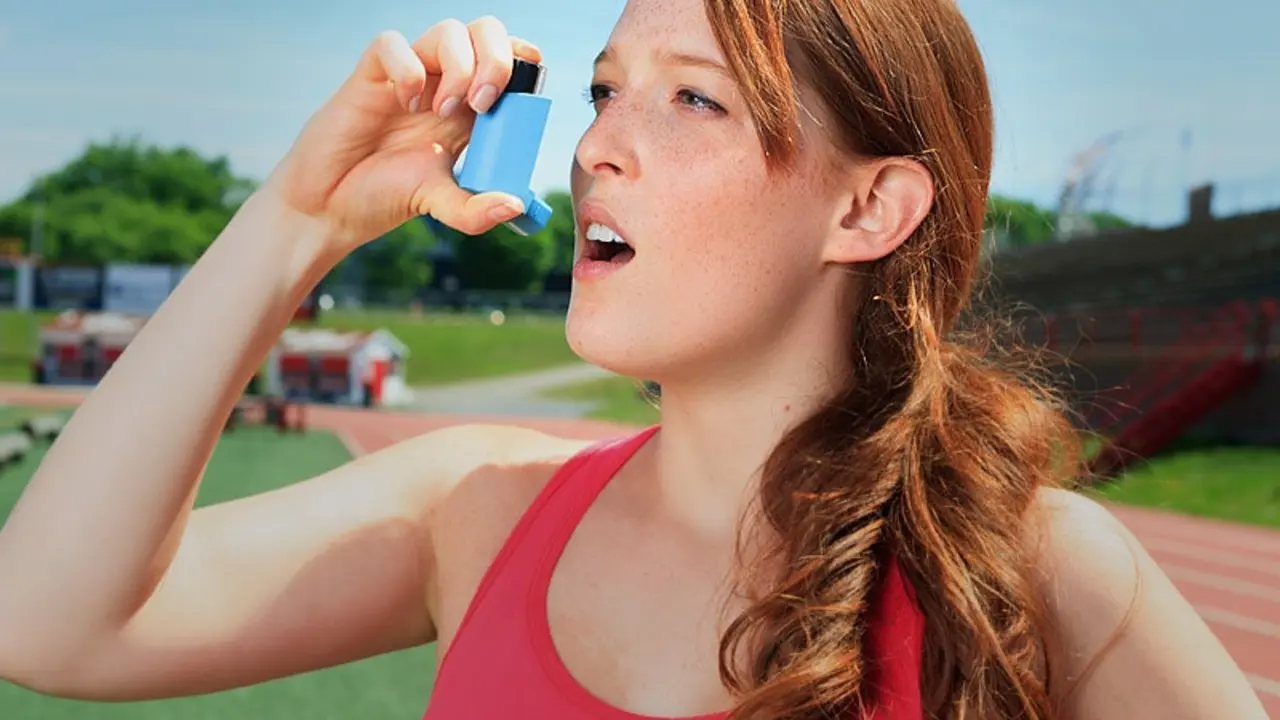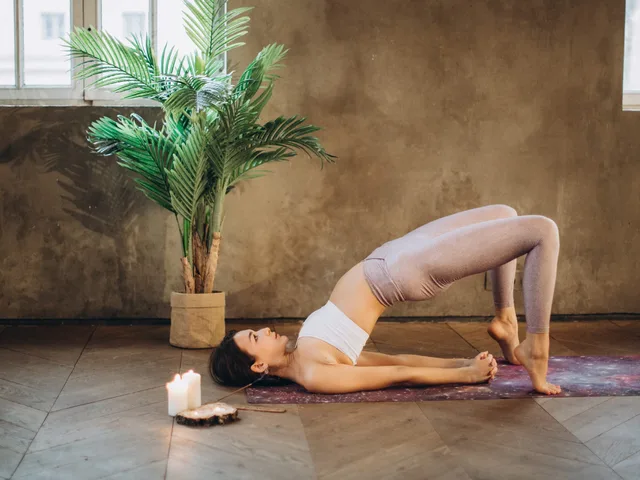Unraveling the Mystery: Exercise-Induced Asthma Unveiled
When we think about the hurdles and breath-taking (quite literally!) moments one faces during a workout, exercise-induced asthma or EIA can be a real party pooper. Picture this: you’re pacing through your morning jog, the cool breeze is your cheerleader, and just as you're feeling like Rocky at the top of those infamous Philadelphia steps, you find yourself in the midst of a hacking cough, wheezing, and gasping frenzy. It's like your lungs decided to put up a 'Closed for Business' sign. To the uninitiated, exercise-induced asthma is that annoying condition where vigorous activity gets your airways all inflamed and narrow, leading to symptoms that can be as mild as a short bout of breathlessness or as severe as a full-blown asthma attack. And here's the kicker: you don't even have to have regular ol' asthma to join the EIA club – it’s an all-inclusive deal.
It all boils down to some respiratory hocus pocus, where your airways decide to act up when you hit the gas pedal on physical activity. The symptoms typically kick in after a few minutes of starting your workout and can stick around like unwanted guests at a party for a bit after you've finished. But don't fret, because today, we're going to dive into the deep end of understanding exercise-induced asthma and how albuterol, the bronchodilator extraordinaire, can be your knight in shining inhaler.
Albuterol: Your Inhaler's Secret Sauce
Now let's talk about the star attraction of most asthma inhalers—albuterol. It’s like the superhero of bronchodilators, swooping in to save the day when your lungs decide to clamp down during a workout. Here's the science bit: it kicks into action pretty fast and works by relaxing the muscles around your airways that have tightened up, allowing you to breathe with a little more ease. Users swear by its ability to take them from feeling like a fish out of water back to their usual athletic selves in no time.
I remember this one time I was hiking in the scenic trails of the Great Smoky Mountains, and I could feel the tell-tale signs of an EIA episode creeping in. So, I reached for my trusty albuterol inhaler, and voilà, it was like the skies cleared and the birds started singing again. Okay, maybe that’s a tad dramatic, but you catch my drift. It's a quick fix, but it's not just about taking a puff and forgetting it. Understanding the proper use of albuterol is like learning the secret handshake to an exclusive club—there's a technique to it, and I'm here to teach you the ropes.
The Insider's Guide to Albuterol Usage
There's a method to the albuterol madness, and it's important to get the technique down to make the most of this bronchodilator. First off, you need a prescription from your doc, because this isn't something you can just pick up at your local pharmacy like a pack of gum. Once you've got the green light and your own personal inhaler, the doctor should show you how to use it properly, because let's face it, puffing away without a clue is as effective as trying to cook a gourmet meal with just a microwave. You need to shake it like a Polaroid picture, attach it to the spacer if you have one, exhale like you're trying to blow out the candles on your birthday cake, then breathe in as you press down on the inhaler. Hold that breath in like you’re a human balloon for about 10 seconds, give or take, for maximum effect.
But here's a pro tip: use your albuterol about 15 to 30 minutes before you start exercising. This preemptive strike gives it enough time to do its magic and keep those pesky EIA symptoms from gate-crashing your workout. Remember, this isn’t a replacement for daily asthma control medication if you’ve got the chronic kind of asthma; think of it as the sidekick rather than the hero. Routine is key – make this part of your pre-workout ritual like stretching or choosing the perfect playlist, and you'll stay ahead of the game.
Befriending the Breathless: Tips for Managing EIA
Now that you're well-acquainted with albuterol, let's not put all our eggs in one basket. Managing EIA needs a multi-faceted approach, like setting up a game plan for your ultimate sports day. First up, warm-ups are not the optional opening act before the main event; they're the cornerstone of keeping EIA at bay. A progressive warm-up that gradually revs up the intensity can be like negotiating with your lungs, letting them know there's a workout on the horizon, and they better play nice.
You've also got to be smart about your workout environment. For instance, if cold air triggers your EIA, then maybe opt for indoor activities during a winter wonderland. Also, staying hydrated isn't just the mantra of wellness influencers; it's critical for those with EIA because dry throats and airways are like kindling for asthma symptoms. Now, while you might want to look like a tough cookie, wearing a scarf or a mask to warm the air you breathe can be a literal lifesaver for your airways.
Let's say you've done everything by the book – prepped with albuterol, warm-up done, scarf on point – and EIA still throws you a curveball. Don't play the hero; take a breather, use your albuterol again if needed, and always, always have an action plan. This isn't just a 'cross that bridge when we come to it' scenario. Speaking with your doctor to formulate an asthma action plan is like plotting the Xs and Os before a big game. It will give you peace of mind and keep you safe, which, after all, is the name of the game here.
Weathering the Storm: The Impact of Environment on EIA
Ever noticed how sometimes the environment seems to conspire against you, with your workout feeling less like a fitness regime and more like a trial by Mother Nature? Well, the truth is, environmental factors can be major players in the EIA drama. The trigger could be anything from Pollen with a capital P during allergy season, to a cold breeze that feels like it's coming straight from the Arctic.
For those of us who love braving the great outdoors for our fitness fix, we need to play the environmental card smartly. Pay attention to air quality reports; they're like your personal weather forecast for lungs. High pollen days? Maybe take a raincheck on that run through the park. Too chilly? Indoor pool laps could be the order of the day. It's all about adaptation, which, if I remember correctly from those biology classes, is a key survival trait, so let’s put it to good use.
On the flip side, even indoor environments can have their gremlins. Dust mites, chlorine in pools, or even fragrances from air fresheners can ruffle your respiratory feathers. Keeping your living and workout space clean and allergen-free is a good start. Air purifiers can be as important as the kettlebells in your exercise arsenal if you want to make your workout space a sanctuary rather than a challenge course for your lungs.
Listening to Your Body: Recognizing EIA Symptoms
Understanding the symphony of symptoms your body plays when EIA strikes is as important as knowing how to read a music sheet before playing an instrument. The usual suspects include shortness of breath, wheezing, chest tightness, and coughing. But EIA can sometimes be sneaky, with less obvious signs like decreased endurance or even stomachaches. It's all about being in tune with the nuances of your own body's reactions.
Let's say you're in the middle of a particularly exhilarating Zumba class, and suddenly, you're not feeling the Zumba-love anymore as a wheezing cough crashes the party. This is your body dropping not-so-subtle hints that it's EIA o'clock. Taking notice and acting quickly can make all the difference between a minor hiccup and a full-blown asthma episode.
And hey, let’s not forget that monitoring your symptoms isn’t just a one-off; it's a relationship. Keeping a log or diary can be as revealing as those reality TV shows where people find out shocking truths about themselves. Over time, you can start to see patterns and triggers emerge, like your own personal Da Vinci code of asthma management. So, listen and learn – your body has a story to tell, and it's worth paying attention to.
Albuterol Alternatives and Complementary Therapies
Albuterol might be the MVP for many EIA sufferers, but the world of asthma management is not a one-size-fits-all t-shirt. For those seeking to broaden their horizons or who just don't vibe with albuterol, there are alternatives and complementary therapies to explore.
Maybe your doctor mentions a long-acting beta agonist (LABA) or inhaled corticosteroids as maintenance therapy to keep those breathing tubes in check round the clock. Or perhaps leukotriene modifiers, the agents that stop those chemicals in your body that cause inflammation during an allergic reaction, become your go-to. It's like having a diverse arsenal at your disposal, tailored to fit your needs and battle plan.
And now, for something completely different: non-pharmaceutical options. Picture pranayama – those deep, mindful breathing exercises from yoga that could give EIA a zen-like kick in the pants. There's also Buteyko breathing, which is all about reducing hyperventilation. Swimming is another great alternative, applauded for its respiratory benefits and the warm, moist air that's easy on the lungs. The point is, while albuterol can be a lifesaver, it doesn't have to work alone. Complementary strategies can not only enhance its effects but also contribute to overall lung health and endurance – and who wouldn't want that?
Diving headlong into the adventure that is managing exercise-induced asthma with albuterol at your side (and other potential allies), let’s take a moment to remember why we're tackling this challenge in the first place. It's about more than just avoiding discomfort or reacting to symptoms; it’s about embracing an active lifestyle with confidence and not letting EIA dictate the terms. Whether it’s the jubilation of cresting a hilltop without gasping for air, or finding joy in a dance class without fearing the next breath, every victory is a testament to the resilience not just of the body, but also of the spirit.
Now go out there, armed with your knowledge, your inhaler, and perhaps a new perspective on managing EIA. Tune into your body's cues, create an environment conducive to healthy breathing, and explore all avenues of treatment that can contribute to your well-being. Remember, it's about crafting a bespoke solution that fits your lifestyle and your needs, transforming the potentially daunting prospect of exercise-induced asthma into just another manageable aspect of your fitness journey. Stay sprightly, happy workout warriors!



